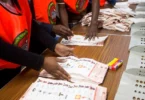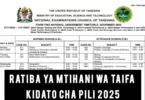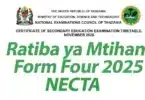Why NSFAS Remains an Essential Lifeline for South African Students
In South Africa, the path from high school to higher education can be obstructed by financial barriers. That’s where the National Student Financial Aid Scheme (NSFAS) steps in—by offering bursaries and loans to academically deserving students from low-income households who wish to study at public universities or TVET colleges. Established under the NSFAS Act (Act 56 of 1999) and overseen by the Department of Higher Education and Training (DHET), this federal scheme plays a critical role in promoting access to higher education.
SIMILAR: South Africa National Shutdown Set for 21 November Over GBV Crisis
Table of Contents
What Is NSFAS?
NSFAS is a South African government financial-aid scheme that provides funds to eligible undergraduate students at public universities and TVET colleges. The funding either comes as a bursary (which does not have to be repaid under certain conditions) or a loan-plus-grant mechanism, depending on the student’s circumstances and the type of institution.
Who Qualifies for NSFAS Support?
Eligibility is based on a means-test and academic potential. Key qualifying criteria include:
- South African citizenship or permanent residency
- Household combined annual income ≤ R350 000 (or ≤ R600 000 for students with disabilities) NSFAS
- Enrollment in a funded programme at a public university or TVET college
- For new applicants, they must not have already obtained a qualifying tertiary credential
Students from households receiving social grants (e.g., via South African Social Security Agency, SASSA) are typically automatically considered for funding.
What Does NSFAS Funding Cover?
The funding covers several cost categories (subject to annual guidelines by the DHET):
- Tuition and registration fees at qualifying public institutions NSFAS
- For universities: accommodation (in-residence or approved private), living allowance, books and learning materials, and transport (where applicable)
- For TVET colleges: accommodation allowances differentiated by area (urban, peri-urban, rural), transport allowance, and incidental/personal care allowance
How to Apply and Manage NSFAS Funding
The application window is usually open annually (often from September to November for the following academic year). Applicants must create a MyNSFAS profile on the official website, submit required documents (ID, academic record, proof of income or social-grant status, etc.), and select their institution and course.
Once approved:
- For university students, funding may include mixed-loan-and-grant elements; for many first-years since the free-tertiary-education announcement, the funding is a full bursary (non-repayable) if conditions are met.
- For TVET college students, often fully-funded bursaries apply (no repayment).
- Students who leave their qualification or fail to meet academic requirements may be required to repay part of the funds or convert bursary to loan.
- Income-based repayment schemes apply for loans once graduates earn above a threshold amount.
Why NSFAS Matters
NSFAS’s mission extends beyond funding individual students—it supports national objectives of redressing educational inequality and enabling historically disadvantaged groups to access higher education. A study noted that NSFAS helped increase black participation in higher education and is a key tool in South Africa’s transformation agenda.
For students from low-income backgrounds, having access to tertiary education without prohibitive debt or financial barriers changes life-trajectories. For the country, it strengthens the skilled workforce and contributes to socio-economic development.
Challenges and Areas for Improvement
Despite its importance, NSFAS faces several challenges:
- The scale of demand often outpaces available funds, resulting in delays or incomplete payments.
- Mismanagement, irregular expenditures, and administrative bottlenecks have been reported, which challenge credibility and efficiency.
- Ensuring student-loan recovery while maintaining access and fairness is a delicate balance.
- Communication and transparency around funding criteria, payment status, and student obligations could be improved for better student experience.
What’s Next for Students and Institutions
If you’re a prospective or current tertiary-student in South Africa, the key action is to:
- Monitor your MyNSFAS account and ensure all required documents are uploaded and accurate.
- Understand your rights and obligations — including academic progress standards and repayment conditions.
- Stay informed about any institutional announcements regarding allowance payments, accommodation or stipend awards.
- Institutions likewise need to ensure timely registration, verify student eligibility, and manage refunds or disputes effectively.
For NSFAS itself, ongoing reform efforts focus on enhancing funding stability, reducing payment delays, improving data-integration (e.g., income and social-grant verification), and strengthening oversight to prevent leakages. These are important for maintaining trust and sustainability.
Conclusion
The National Student Financial Aid Scheme (NSFAS) is one of South Africa’s most significant mechanisms for transforming access to higher education. By providing financial support to students who might otherwise be excluded, it plays an essential role in building equitable opportunities and empowering the next generation of graduates. Whether you’re about to apply, currently funded, or planning your next steps, knowing how NSFAS works and what it offers is key.
Check more E NEWS articles;
- Marco Hall Net Worth 2023
- How do you show true love?
- Aaron Krause Net Worth 2023
- Richard Hilton Net Worth 2023
- Michael Rapaport Net Worth 2023
- Ratiba ya Mitihani ya Darasa la Nne 2025
- Matokeo ya kidato cha sita 2025 Haya Hapa
- Ratiba ya Mitihani ya Kidato cha Pili (CSEE) 2025
- Ratiba ya Mitihani ya Kidato cha Nne (CSEE) 2025













